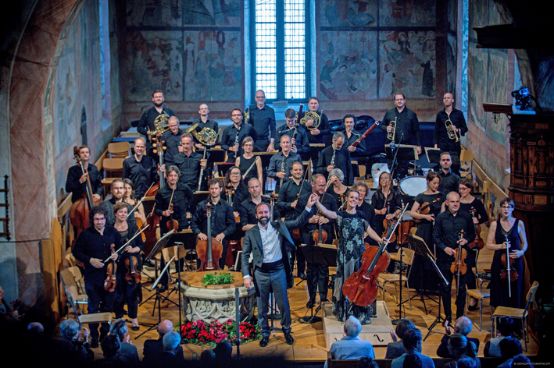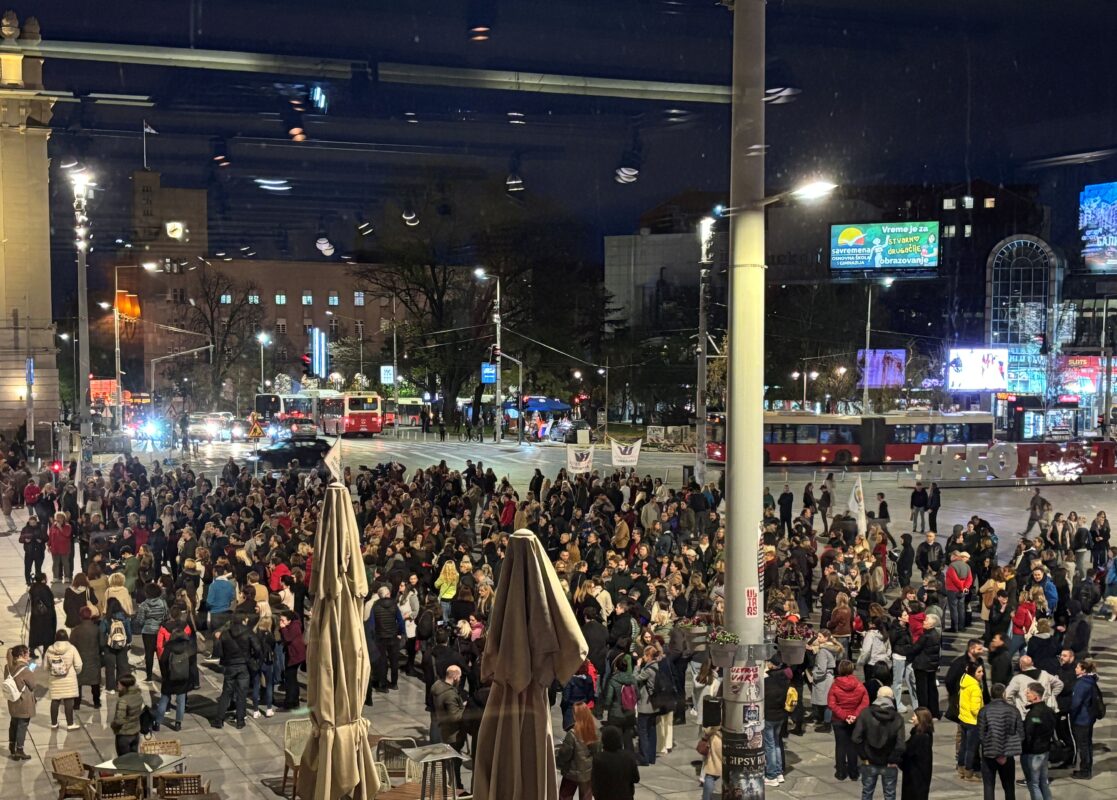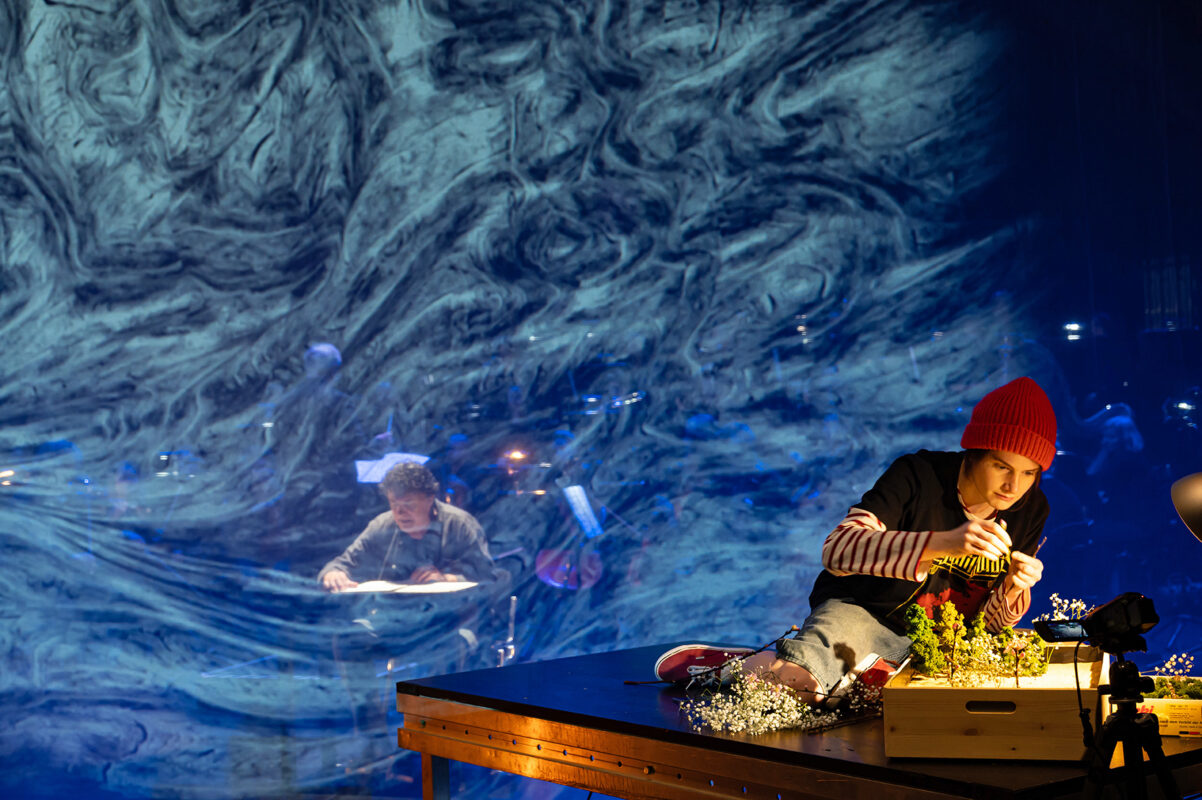From the Saanenland to Paris
The Gstaad Menuhin Festival is the second largest music festival in Switzerland. Celebrities performed in various formations on the opening weekend.

The church in Saanen is filled to capacity. Even in the frescoed choir room, where a brown Bösendorfer grand piano stands, the audience is seated. As soon as András Schiff plays the first notes of Johann Sebastian Bach's cycle The well-tempered pianovolume 1, the concert audience becomes a devout congregation. Many of the 750 concertgoers have closed their eyes to listen to the Hungarian pianist's subtle art of interpretation. András Schiff is not someone who reinvents the wheel. He likes nuances more than contrasts, develops one from the other and pays attention to the natural flow of Bach's music. He only hints at the basses in the D major prelude, while he plays the E flat major prelude as freely as a fantasy. The fugues are not spelled out, but always told in a larger context. Schiff also discovers the melody in the counterpoint and maintains the tension in this long journey through the keys until the acclaimed end.
Most of the concerts at the seven-week Gstaad Menuhin Festival take place in the churches of the Saanenland, allowing a special closeness between the performers and the audience. Since Christoph Müller took over the festival founded by Yehudi Menuhin in 2002, audience numbers have tripled. This year, two new halls - the church and the multi-purpose hall in Lenk im Simmental - have been added to the total of eleven concert venues. But the enterprising artistic director has also founded various academies that train young musicians in the fields of singing, piano, strings, baroque performance practice and conducting. The juxtaposition of up-and-coming artists and stars, intimate chamber concerts and large symphonic performances in the Gstaad Festival Tent, which seats 1,800 listeners, is what makes this festival so appealing, according to the director of the second largest in Switzerland, which organizes around 60 concerts and has a budget of 6.7 million francs in 2019.
With only 120 seats, the chapel in Gstaad is a particularly small concert venue. As in the church in Saanen, the acoustics here are transparent and have hardly any reverberation, so that every musical detail can be followed. The hard pews demand a little asceticism from the audience at this one-hour morning concert - but it is rewarded. Franz Schubert's Sonata (Duo) in A major op. 162 is performed by Dmitry Smirnov and Denis Linnik with a simple tone and chamber music density. The two perfectly attuned young musicians lend Béla Bartók's rhythmically intricate first rhapsody the necessary colorfulness. Only in Robert Schumann's first violin sonata does one wish Dmitry Smirnov had a less pressed tone; the pianissimo opening of the second movement lacks mystery. But the weightless way in which the violinist at the top of the bow realizes the semiquavers at the beginning of the finale, with Denis Linnik at the piano following him like a shadow, rightly delights the audience.
Festival motto Paris
The Saturday evening concert on the opening weekend reflects this year's festival motto in its program and line-up. Hervé Niquet has come to Saanen with his original Parisian ensemble Le Concert Spirituel to present music by the baroque composer Marc-Antoine Charpentier. With the festive sounds of the overture to Le Malade imaginaire Niquet begins the well-attended evening before giving a short introduction to the time of the Sun King in French. In German-speaking countries, Charpentier is only known for his Te Deum taken from the Eurovision anthem. When the choir and orchestra, as in the motet In Honorem Sancti Ludovici regis Galliae Canticum in fortissimo, the acoustics in Saanen church, which are ideally suited to chamber music, reach their limits. The brass bangs, the timpani roar. But apart from the overly sharp sound peaks, this predominantly homophonic music unfolds great charm, even if it is hardly dramatic. The many tonal contrasts in the motets and the alternation between the well-balanced choir and the slender vocal solos are well differentiated. The concluding, entirely dance-like Te Deum shows the sensual splendor of the French court.
The following evening, Sol Gabetta will also be performing the second cello concerto by Camille Saint-Saëns, a rarely performed work by a French composer. The Argentinian has been a regular guest in Gstaad since 2003. Her bright, flexible cello tone is well suited to the light solo concerto. The Basel Chamber Orchestra, conducted by Pierre Bleuse, provides attentive and attentive accompaniment. Bruno Soeiro's four-movement composition Sillages, Sons de Parfums unfortunately lacks musical substance. However, it is also due to the lack of sophistication in the interpretation that the clouds of musical fragrance in this world premiere are not seductive. In Georges Bizet's Symphony in C major, on the other hand, the Basel Chamber Orchestra is on familiar ground. The warm string sound is enchanting, the agile woodwinds have grace. And the orchestra turns the virtuoso finale, reminiscent of Mendelssohn, into a real charm offensive.
The festival continues until September 6.








